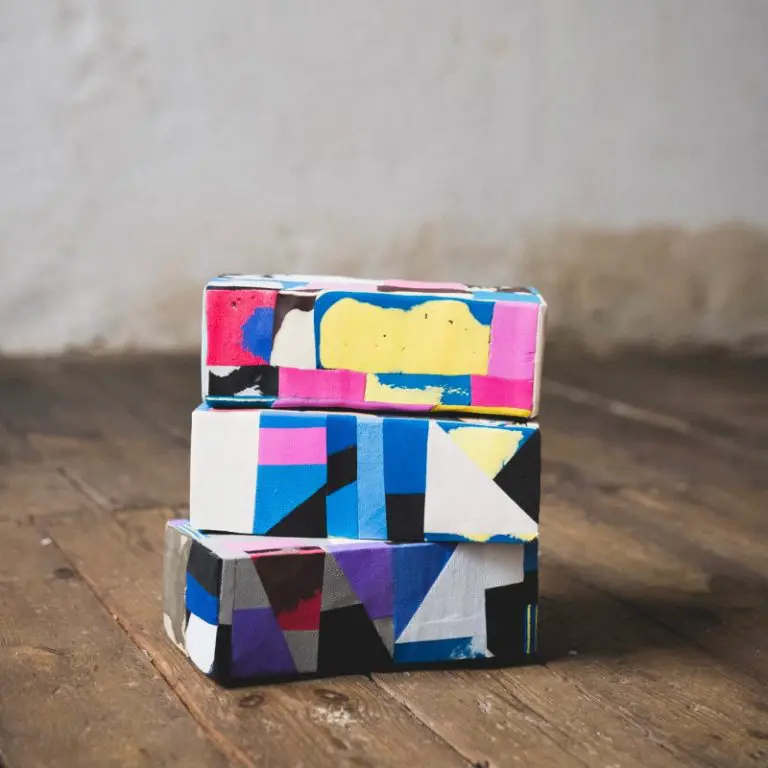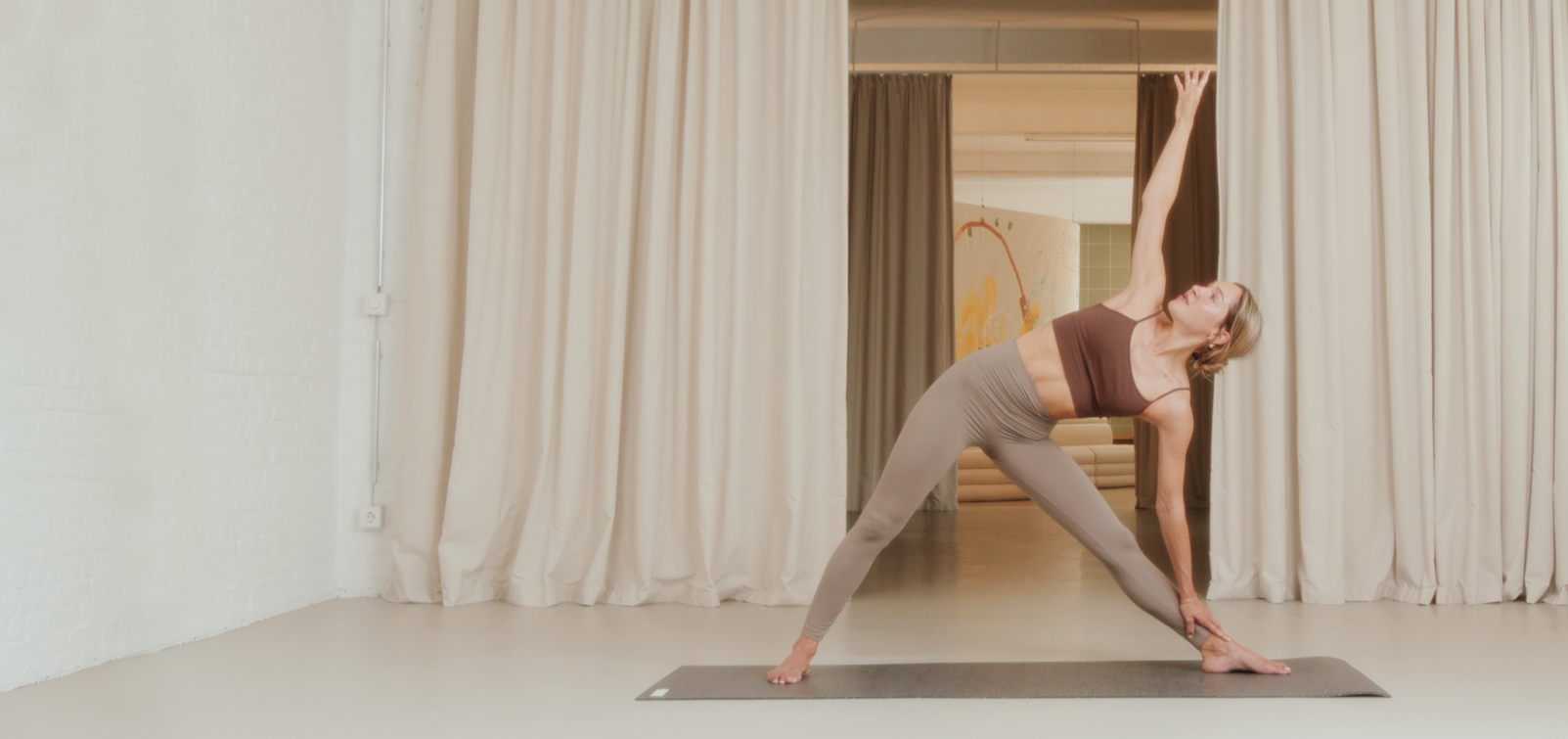Have you ever been to a yoga class that actively included deaf people? A question you don’t ask yourself, if you’re hearing. But inclusion remains a topic that we would like to deal with further, especially in relation to yoga, which literally means unity in Sanskrit. Is a unity between hearing and deaf people possible? We think so, it is always possible to approach each other if you want to! The hejhej-bags are sewn in a workplace for deaf people. We have learned to sign thank you and would be happy to express more yoga-related terms in sign language.
For Annalisa Weyel, sign language is her mother tongue, even though she hears. She grew up with it, that’s how she communicates with her parents. Due to her closeness to the deaf culture, she knows what barriers deaf people encounter in everyday life and also in yoga. We are happy that she is sharing her insights and that she wrote this guest article for us.
Grew up in the deaf culture
I’m Annalisa, 19 years old, come from the area close to Frankfurt on the Main and I’m a CODA. Never heard of? CODA stands for “Child of Deaf Adults”. My mom is deaf, my dad is hard of hearing and so I grew up in the hearing-impaired culture with sign language as my mother tongue. Sign language is my mother tongue. Sign language is my mother tongue. What is strange to hearing people, is everyday life to me. We use sign language to communicate, when someone rings the doorbell units all over the house flash and my parents always need interpreters for events. The first time I went to kindergarten I thought that everyone knows sign language and started signing with the other children. I was very surprised when nobody understood sign language. From an early age, I became aware of the barriers that deaf and hard of hearing people have to overcome in their everyday life. I became aware and was often very shocked when, for example, hearing people would not approach my parents or when the application for a sign interpreter once again was not approved.
Positive responses to sign language challenges and courses
After graduating from high school, I realized that there was still a lot of explanatory work to do. I realized that I want to be part of this change. I started offering free signing courses with my parents, uploaded tutorials on YouTube. On my Instagram account, I started to inform and initiated “sign challenges” every now and then. The responses to these small and large projects have always been incredibly positive. I have always felt very supported and acknowledged in my efforts towards more inclusion. After all, there are an estimated 12 to 13 million hard of hearing people in Germany. These people are not all dependent on sign language, but still face everyday barriers. In my courses, I also notice how many people are simply prejudiced or too afraid to contact people with disabilities. On the one hand that makes me sad, on the other hand, it gives me so much courage when finally, prejudices vanish into thin air.
Yoga for deaf people
Yoga has been an integral part of my life for about two years. I love the concept of flowing movements and the subsequent balance. I rarely ever feel so good and present compared to when I’m on the mat. To get into the yoga practice and to stick with it was no problem for me. I can visit any yoga studio that I like. There is a huge selection of other resources such as yoga videos on YouTube or certain apps. For many this is taken for granted, but actually it is a great privilege to have easy access to all of this.
Yoga on YouTube for deaf? Subtitles are often missing
Deaf people cannot simply join any sports studio. Registering for possible courses requires thorough research as most do not include sign language. Most sports apps don’t even offer subtitles and the YouTube subtitles have the potential for improvement. Sports with little instructions where you tend to imitate movements or follow a principle, such as Zumba or football, are ideal for deaf people. It’s more difficult with yoga: The right posture and focus are crucial. Especially in rural areas, yoga for deaf people is scarce. Many hearing yoga teachers often simply fail to see that their offer is not inclusive. That is simply because most of them have never had contact with deaf or hard of hearing people.
Dear Yoga, please include the deaf!
There are simple adjustments that can help make the classes more inclusive. It is important that the room is large and bright and that all participants can make eye contact during the entire course. So that everyone is able to see the yoga teacher clearly. It’s rather counterproductive when the teacher walks around the room during the explanations. What is also important is to speak clearly, to use a lot of gestures and facial expressions, and ideally, of course, use sign language. It is a start to learn the signs, the special ones used for yoga practice. Then, of course, it should be communicated externally, that deaf people are very welcome and can participate without problems. That would be the first step towards more inclusion in the yoga world.
Support and encourage deaf yoga teachers!
There is also a lack of training centers for deaf and hard of hearing yoga teachers. Because the most pleasant thing for deaf yogis is when the teacher himself is deaf and knows the culture, language, and barriers of the participants. Personally, I only know deaf yoga teachers from the internet, for example, Lemonia Rose or Betty Schätze. In their YouTube videos, you can see very well how sign language in connection with subtitles works great for yoga practice for the deaf. It is very important that yoga teachers who are deaf, for example, are supported and encouraged. That way they can continue to work actively toward inclusion and more and more people with disabilities find the courage to go in this direction professionally. In my opinion, this is not only beneficial for the deaf, but also for the hearing yogi:nis. Because I believe we can learn from the deaf on so many levels.
Hearing people can learn from deaf people
Hearing people can improve their way of communication by learning from the hard of hearing people. Communication through sign language is more open, more direct, and clearer. Eye contact during the conversation is essential. All of these are things that are becoming increasingly rare in our society. The cohesion of the deaf community also inspires me again and again. Everyone helps one another, we are there for one another and are connected to one another across the world. Because even if every country has its own sign language, the languages are quite similar to one another. The greatest challenge for the hard of hearing is to communicate in the hearing world. It is therefore up to hearing people to make everyday life easier for the deaf through our actions. We can learn sign language, inform ourselves about the grievances and the barriers, and thus open ourselves to the situation of disadvantaged people. We can talk about the topic with our friends and family and thus raise awareness of those around us. We can encourage our favorite yoga studios and sports clubs to make their offerings more inclusive. We can all change something, I am convinced of that.
Thank you Annalisa Weyel.

Credits: Annalisa Weyel seen on the rather-dark hejhej-mat .
Find on Instagram 5 ways to calm your nervous system.
We have recently added a few yoga classes with sign language to our YouTube channel. Take a look at these, for example: Yoga in sign language | 20 min Flow | DE





